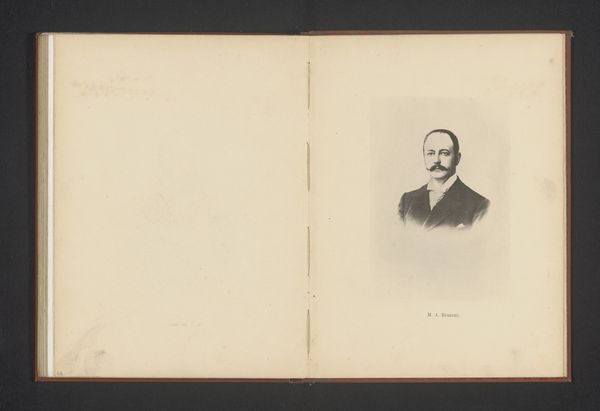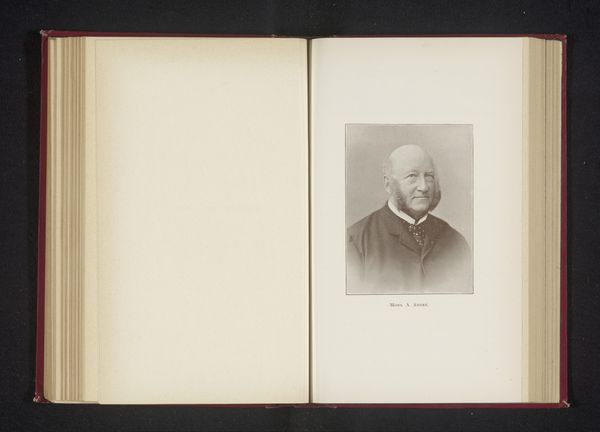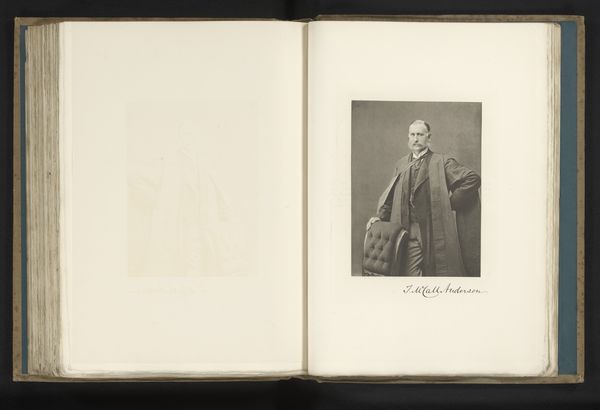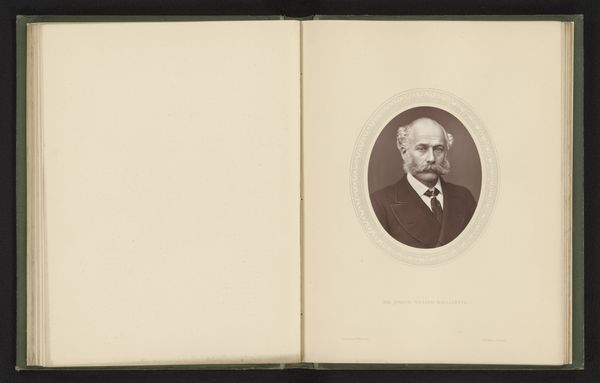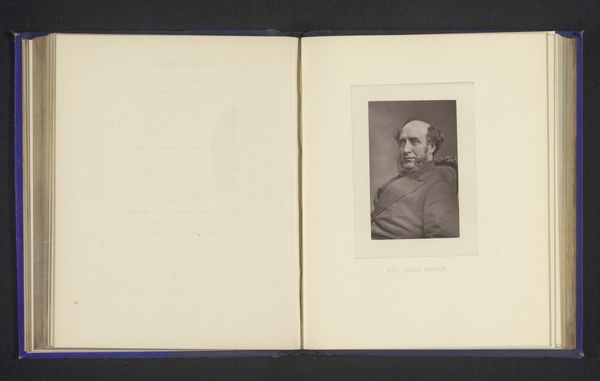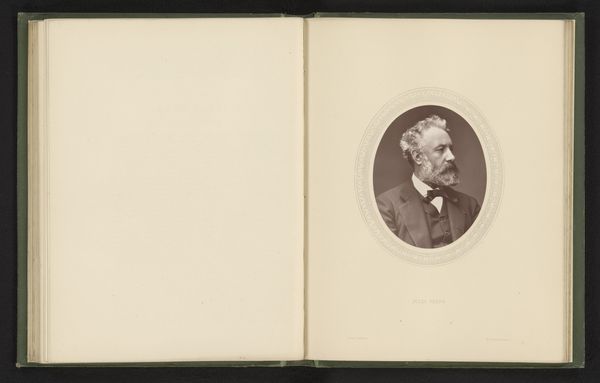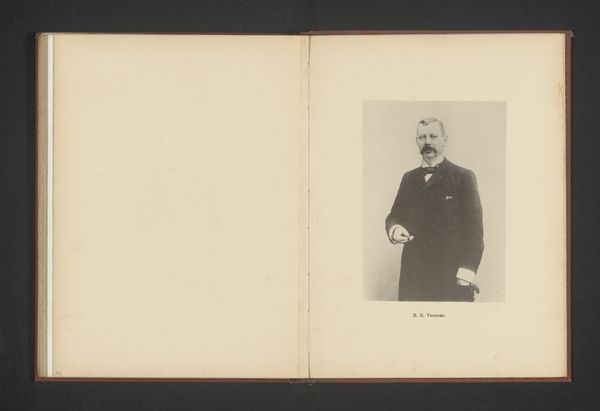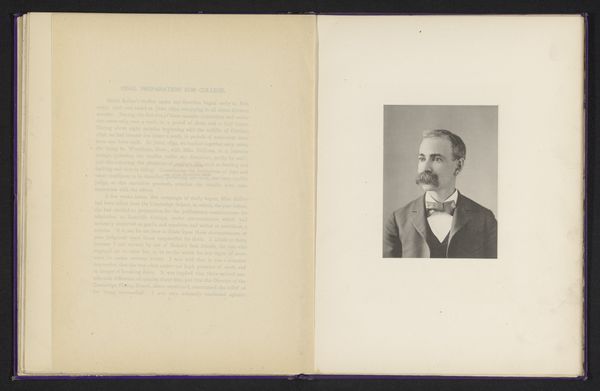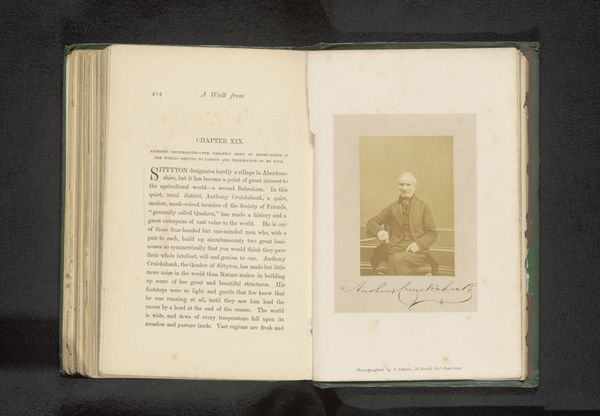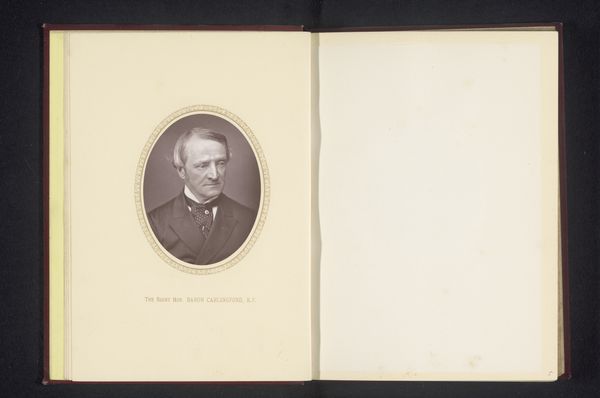
#
aged paper
#
homemade paper
#
ink paper printed
#
paperlike
#
white palette
#
paper texture
#
thick font
#
white font
#
golden font
#
historical font
Dimensions: height 120 mm, width 86 mm
Copyright: Rijks Museum: Open Domain
Curator: This intriguing image presents us with a portrait of Earl Cairns, dating to before 1881. It's ink printed on what appears to be aged, perhaps even homemade, paper. Editor: Immediately, I'm drawn to the paper itself! It looks almost velvety, like you could reach out and feel its history. The portrait gives off a serious vibe – very "Victorian gentleman." Curator: Indeed. The image provides a window into Victorian society and its reverence for figures like Cairns. His portrait, embedded within this particular paper, speaks to notions of permanence, legacy, and the construction of historical memory. We can think about the power structures that enabled and sustained his prominence. Editor: Totally. And, honestly, that font underneath the portrait – so ornate! It almost feels like they’re trying a bit too hard to scream “important!” But I do like how they chose to frame the image inside the right page. There is another full, empty, left side page of this beautiful book. Curator: Exactly! The placement elevates the subject, reinforcing the established hierarchies. However, consider also how the very choice of paper – potentially homemade, or deliberately aged – might be subtly challenging those same rigid structures. It introduces a handmade, somewhat vulnerable quality, a potential fissure in the veneer of unyielding power. It makes me consider who made the book! Editor: That’s interesting. I'm just struck by how much quieter and smaller and vulnerable it feels to me now! I almost feel like making a collage on that blank space on the left! The crisp emptiness is quite suggestive. Curator: I agree; the book’s format as a whole creates a juxtaposition of power and fragility. This tension mirrors larger societal conflicts inherent to the late 19th century: between tradition and modernity, stability and revolution, visibility and erasure. Editor: I didn't think a simple book opening could say so much! Looking closer really did open it all up! Curator: Yes! I think that through a work like this, we gain insights into Victorian values while acknowledging the era’s internal contradictions. Editor: Definitely more to it than just a stern face on paper, isn’t it?
Comments
No comments
Be the first to comment and join the conversation on the ultimate creative platform.


